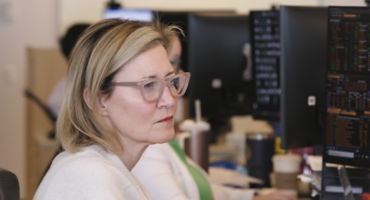The landscape has changed significantly since our 2025 outlook when we predicted an imminent reopening of the IPO market. Luckily, despite the ongoing volatility, venture capital is both a long-term and creative business with expanding avenues for liquidity.
In this mid-year outlook, we explore the implications of the IPO market’s delayed reopening and dive into four additional related trends in venture capital.
1. When will the IPO market reopen?
The window that was opening in 1Q25 froze quickly amid market volatility. While we’ve seen early signs of it thawing (with a few IPOs in May showing initial success), it’s too early to tell how thick the ice may be. Continued strong performance in these names could lead to more robust issuance as early as the second half of this year, especially if paired with solid returns across public markets more broadly. In our view, however, it will more likely take until the back half of this year for meaningful momentum to rebuild, which means the real window is probably 2026. Importantly, continued improvement in the IPO outlook is sensitive to large macro developments — such as negative tariff updates or, worse yet, a recession — which can quickly reverse any progress.
In the meantime, the IPO backlog continues to grow as an increasing cohort of mature private companies are ready to go public but are waiting for a better entry point. So, while we believe market uncertainty will broadly slow deployments across early- and growth-stage venture, delayed IPOs could actually increase late-stage deployment. Notably, a volatile macro backdrop fueled by tariff uncertainty will likely result in longer times between financing rounds, a higher quality bar, and valuation pressures in venture (outside of AI).
2. What’s going on in M&A?
Global M&A deal values relative to GDP were at a near 30-year low at the end of 2024.1 The hope of tax cuts and reduced regulations had many expecting a large uplift in M&A activity for 2025, but this trend has yet to play out meaningfully. Halfway through the year, it is still unclear if these potential tailwinds will continue to be outweighed by market uncertainty, recession fears, and higher-for-longer interest rates.
The data thus far has been a mixed bag, with a 25% increase year over year in March 2025 followed by a nearly 20% month-over-month drop in April.2 We’re hesitant to predict long-term trends for the year based on this early pullback but will be watching subsequent M&A volume closely to better understand the full impact of the recent volatility on buying appetites. While uncertainty can be a cold bucket of water for prospective buyers, it’s also not uncommon to see some companies with cash lean into periods of dislocation.
The regulatory environment presents another big unknown. Following President Trump’s reelection, shares of companies with pending mergers surged, driven by expectations of reduced regulatory scrutiny. However, that contends with rhetoric around not giving large companies (and, in particular, big tech) a “free pass.” We saw a relatively normal first quarter compared to historical trends, with three significant merger investigations concluded.3
3. Is there still room for growth in private equity secondaries?
Private equity (PE) secondaries saw record transactions in 2024, with market volume rising 45% to US$162B.4 Moreover, the expectation of even higher deployment going forward is being fueled by an expansion in dry powder, which reached an all-time high for PE secondaries of US$288B last year.5 This accumulation of dry powder is itself being driven by a robust fundraising environment.
In fact, funds in 1Q25 raised a record US$50.7B, the strongest first-quarter start in recent history, nearly matching the US$53B raised in all of 2022.6 This momentum is expected to continue, with over 250+ secondaries funds estimated to be in market, targeting a total of US$93.8B.7 Importantly, this understates the amount of capital sought as many managers do not disclose targets.
Is this expected influx of capital a cause for concern? In our view, not necessarily, as the secondaries market has less than 2x dry powder to transaction volume compared to more than 3x in the primary space.8 On that basis alone, one could argue it’s significantly undercapitalized, regardless of the exponential growth the market has gone through to date.
However, we think it is crucial to monitor secondaries’ discounts as a percentage of NAV. Many investors rely on a discount to NAV to mitigate j-curves, as realizing that discount upon purchase results in an immediate spike in performance. Notably, buyout valuations average 94% of NAV and the influx of new capital could drive this higher (Figure 1). Investors should consider at what point the fundamental thesis of secondaries could be broken if dry powder forces managers to pay above NAV. In contrast, growth/venture may be relatively attractive given valuations average just 75% of NAV.















